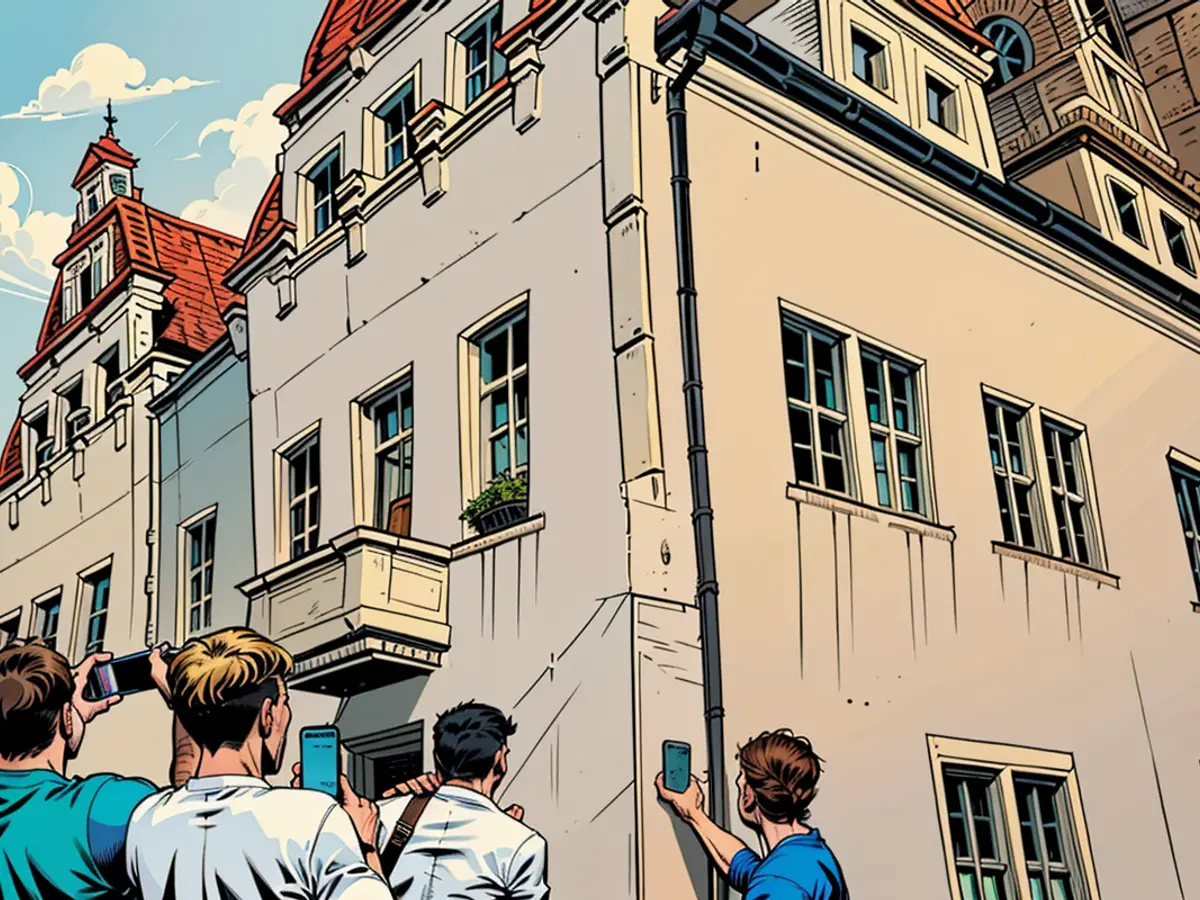Unveiling the Era of Medieval Times - Old-aged depot store in Stendal undergoes digital transformation
In the heart of Stendal, a historical town, you can now delve into a 12th-century marketplace by using modern augmented reality technology. Simply scan a QR code using your mobile device, and the marketplace will appear as it once did, right at its original site.
This marketplace, known as domus mercatorum, holds the title of the oldest amidst those north of the Alps, as declared by the State Office for Heritage Management and Archaeology in Saxony-Anhalt. During the refurbishment of Stendal's market square in 2015 and 2016, its ruins were unearthed.
As Mayor Bastian Sieler puts it, "Visitors can now step into the past of this marketplace. When discussing history, it's essential to portray its true image. Everyone's familiar with the market square, but few know about the marketplace itself."
Witness history through your phone
The marketplace's construction is estimated to have taken place in 1178. Measuring 60 meters long and 9.20 meters wide, it featured two rows of 15 shops on either side of a central wall. Each shop sported a nearly square floor space of approximately 3.4 meters each side, accessed through a narrow 0.51-meter-wide door. The ground-floor shops, devoid of windows, served as storage, workspace, and living quarters for the merchants who displayed their wares on tables outside their establishments. Each shop boasted a hearth for warmth.
Archaeological discoveries and historical records suggest that the marketplace also had an upper floor, likely crafted from bricks, and transforming into a spacious hall with windows. This level, which could be reached via stairs, was specifically reserved for the trade of luxurious goods like fabrics and furs. Its roof was tiled.
By the 16th century, the remaining portions of the marketplace succumbed to demolition, and subsequent buildings refrained from incorporating any remnants of the brick construction, leading to its eventual obscurity.
The augmented reality application was developed by GEO-METRIK Ingenieurgesellschaft mbH Stendal in cooperation with the city of Stendal and the State Office of Archaeology, based on findings from archaeology and historical records.
The Domus Mercatorum, a title given by the State Office for Heritage Management and Archaeology in Saxony-Anhalt, is located within the Municipality of Stendal. Visitors to Stendal can now explore this historic marketplace using modern augmented reality technology, thanks to the collaboration between GEO-METRIK Ingenieurgesellschaft mbH Stendal, the city of Stendal, and the State Office of Archaeology.








